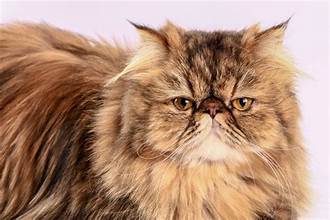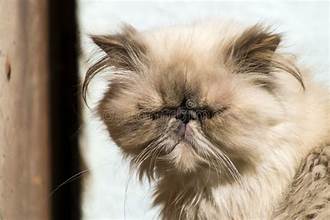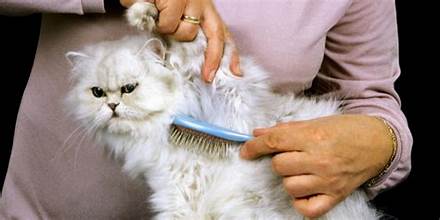Persian cats, with their luxurious coats and very sweet personalities, are among the most popular cat breeds worldwide. However, their unique physical traits, such as their flat faces, also make them prone to specific health issues.
1. Brachycephalic Airway Syndrome
Persian cats have flat faces, also known as brachycephalic features, which often cause breathing difficulties. The shortened nasal passages and compressed airways lead to snoring, labored breathing, and heat intolerance in brachycephalic airway syndrome.

Prevention Tips:
Maintain a cool environment for your Persian, as they are prone to overheating.
Watch for signs of distress and hefty breathing after exercise or in warm temperatures.
Regular vet check-ups can help monitor their airway health and detect early problems.
2. Polycystic Kidney Disease (PKD)
PKD is a genetic condition in which fluid-filled cysts develop in the kidneys, which can lead to kidney failure over time. It is one of the most common health problems in Persian cats. Because it can be hereditary, it’s crucial to adopt from breeders who screen for PKD.

Prevention Tips:
Genetic testing:
If you’re adopting a Persian cat, ensure the breeder has tested for PKD.
Routine vet visits will help detect early signs through blood work and ultrasounds.
Watch their water intake and consult your vet if you notice increased thirst or urination.
3. Dental Disease
Persian cats are prone to dental issues due to their flat face and misaligned teeth. Tartar and plaque can build up quickly, leading to gum disease and tooth decay.
Prevention Tips:
Daily tooth brushing is essential for preventing dental problems. Use a cat-safe toothpaste and toothbrush.
Dental treats can help remove plaque and promote oral health.
Regular dental check-ups with your vet will catch any issues are caught early.
4. Eye Problems
Persians are prone to eye issues, including tear duct blockages, which cause excessive tearing and staining. They may also suffer from entropion, a condition where the eyelids roll inward, irritating the eye. Corneal ulcers and conjunctivitis are also common.

Prevention Tips:
Daily eye cleaning:
Gently wipe away any discharge using a clean, damp cloth to prevent infections.
Regular vet visits:
Keep a close watch on your cat’s eyes for signs of redness, excessive tearing, or cloudiness.
Prevent injury by keeping their environment free of sharp objects that could scratch their eyes.
5. Obesity
Persian cats, due to their low activity levels, are at higher risk of becoming overweight, which can lead to other health problems such as diabetes, heart disease, and joint issues.
Prevention Tips:
Balanced diet:
Feed your Persian cat a high-quality diet appropriate for their age and activity level.
Portion control:
Avoid free-feeding and stick to measured portions.
Encourage exercise:
Engage your Persian in playtime to help them stay active and maintain a healthy weight.
6. Feline Hypertrophic Cardiomyopathy (HCM)
HCM is a condition in which the heart’s walls thicken, making it harder for the heart to pump blood efficiently. Persian cats are among the most commonly affected by HCM.
Prevention Tips:
Routine vet check-ups:
Regular heart screenings, significantly as your Persian ages, can help detect HCM early.
Genetic testing:
If you’re adopting from a breeder, ask whether the parents have been screened for HCM.
Watch for symptoms:
Signs such as lethargy, difficulty breathing, and fainting should prompt immediate vet attention.
7. Skin and Coat Problems
Due to their long, thick fur, Persian cats are prone to skin infections, matting, and irritation. They can also develop fungal infections like ringworm, which can spread if not treated promptly.

Prevention Tips:
Daily grooming:
Regular grooming, including daily brushing, prevents mats and tangles while keeping the skin clean and healthy. It maintains its luxurious coat and helps detect early skin issues.
Monitor for infections:
Look for signs of redness, hair loss, or scaly patches on their skin.
Keep their environment clean:
A tidy living space can reduce exposure to skin irritants.
Conclusion
Understanding the common health problems in Persian cats and how to prevent them is critical to providing the best care for your furry companion. From routine vet visits to daily grooming and monitoring for early signs of illness, these steps can ensure that your Persian cat lives a long and healthy life. By following these preventive measures and scheduling regular veterinary visits, you can take a proactive role in your Persian cat’s health and well-being.
Follow regular veterinary visits and these preventive tips to ensure you provide your Persian with the best care possible.




